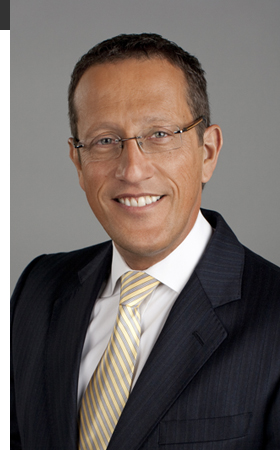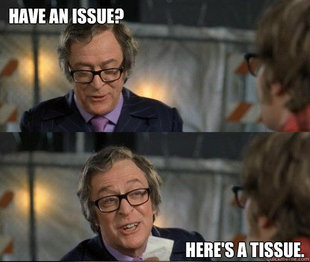Is that any worse than your analysis of flightaware and "speed looks low." He hasn't said anything worse than what I have read in this thread.
Buzzkill....We're drinking and beating up Wolf Blitzer. Go pee on someone elses lawn....
Is that any worse than your analysis of flightaware and "speed looks low." He hasn't said anything worse than what I have read in this thread.
We were approaching perfectly well, but we were too low,” he said. “When the pilot realized it, he put some more gas to correct it, but it was too late, so we hit the runway pretty bad, and we started going up in the air again, and we landed pretty hard.
I know this is still far from a reliable source, but an NBC article had this quote from a passenger on the plane:
It will be pretty bad if the official report for this accident says "the pilot missed".
This guy knows all

I know this is still far from a reliable source, but an NBC article had this quote from a passenger on the plane:
It will be pretty bad if the official report for this accident says "the pilot missed".
No way dude, we'd all have alcohol poisoning in about 4 minutes.CNN just mentioned terrorists, and informed us that fires are usually caused by things burning. Also, regional airliners aren't "full sized airplanes".
I swear we need a "stupid s*** said by news anchors" drinking game for things like this.
I know this is still far from a reliable source, but an NBC article had this quote from a passenger on the plane:
It will be pretty bad if the official report for this accident says "the pilot missed".
It isn't a Cessna, so we have no idea why.
I heard an interview of a pax that said the opposite...."We were up very high and could see the tarmac...IT didnt look right and then we descended steeply and hit the end...."
No. If you reread my posts, I made it clear that 'if true' these are the numbers.
However, someone on pprune supposedly over layed yesterday's flight aware data with today's. I'll post that as well...
Wouldn't be the first person to fly a perfectly good airplane in to the ground. Say.... Eastern in the swamp.
jtrain609 is absolutely right. I'm not sure how you thought this incident would somehow support your 1500 hour rule bashing, since the exact opposite is true. The fact is that ab initio training and cadet programs are the norm in Asia, and people with ~250-300 hours really ARE put in the right seat of heavy jets.
I really hope this incident creates a more public discussion about ab initio training, the practice of outsourcing their new hires to pilot mills in the U.S. (and why it's done), the "FO" contracts they have with freight companies like Ameriflight, and the cultural differences and age and experience hierarchies "nc" referred to that don't lend themselves to adequate CRM.
We should also be talking about the practice of hiring ex-pat westerners as captains (which many of you say "babysit" or "flight instruct" the foreign FOs). I've read this is on the decline in Asia, as countries become more nationalistic, view the ex-pats as taking their jobs, and promote more of their own FOs to Captains rather than hire the ex-pats. What happens if those new captains still aren't up to par, and they're now the ones responsible for leading and supervising the new ab initio FOs?
I think this is a pretty complex issue, but from the outside it sure looks like ab initio training in Asia is broken.
So if you'd like to rage about the 1500 hour rule and how it's preventing you from getting into the right seat of an RJ faster, today's incident is not very good supporting evidence. In fact, it may end up serving as a solemn reminder of why the U.S. should not go the ab initio route (despite how pleased the airlines would be to have their pilots bought into indentured servitude).

Yesterday's approach compared to today? You do realize this is the Golden Gate 6 arrival, which ends over the SFO VOR, with airplanes at 10k feet at that point? For 28L you get vectors for the left downwind, and depending on how long the final is, the descent rate is different for each approach. Some approaches are long and turn towards the Dumbarton bridges. Others are short, dive down and turn before the San Mateo bridge. The paths will be different. Now if this was an STAR with a transition straight to the runway (like the Modesto 4 arrival for the FMS Bridge Visual 28R) then you could look at previous tracks, because you have waypoints and altitudes published the whole way down. But when your STAR ends at the SFO VOR over the airport at 10,000 feet, all bets are off. Different days have different final lengths, and therefore different descent paths.
Well that's it then. GoodnightThe Russian sex slave known as large business jet manufacturer of Savannah, GA girl has posted this on her Facebook. It must be true, NTSB can go home now.
You all know, there are cold beers in a fridge right now, but months to speculate about things you don't know ?
That may be true...Serious question though....But at some point shouldnt each flight regardless of the method to get to final, be established on an identical glideslope path before touching down? I would 'think' that could provide some data to compare would it not?
Yesterday's approach compared to today? You do realize this is the Golden Gate 6 arrival, which ends over the SFO VOR, with airplanes at 10k feet at that point? For 28L you get vectors for the left downwind, and depending on how long the final is, the descent rate is different for each approach. Some approaches are long and turn towards the Dumbarton bridges. Others are short, dive down and turn before the San Mateo bridge. The paths will be different. Now if this was an STAR with a transition straight to the runway (like the Modesto 4 arrival for the FMS Bridge Visual 28R) then you could look at previous tracks, because you have waypoints and altitudes published the whole way down. But when your STAR ends at the SFO VOR over the airport at 10,000 feet, all bets are off. Different days have different final lengths, and therefore different descent paths.
